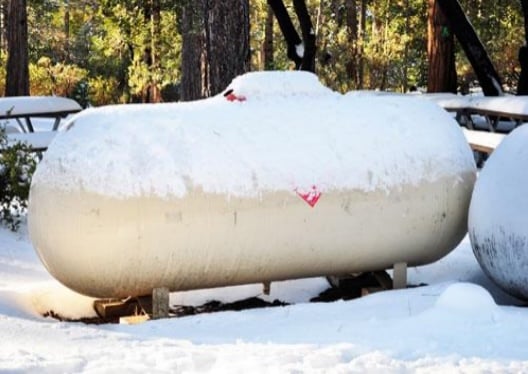In addition to freezing lakes, streams, and fingers, cold outdoor temperatures also have an impact on propane tanks. Fuel for a home furnace or outdoor grill is frequently propane, also known as liquefied petroleum gas, which is stored in metal cylinders or tanks. Proper propane tank storage is crucial for safety since the storage container employs pressure to maintain propane in a liquid state.
Contents
Level Fluctuates
You could have observed some fluctuations in your gauge if you’ve been keeping an eye on the propane level in your tanks, particularly during cold spells. This is a result of the fluctuating temperature as well. The propane contracts as it grows colder, as was already indicated. As the gauge doesn’t know any better, it displays a decrease in propane level when, in reality, only a “shrinkage” has occurred in propane volume. This could also explain why your tank might not look completely full when you hook it up after having a service fill it. It doesn’t imply that any propane was lost. It indicates that the business who filled your tank used temperature correction to modify the quantity of propane that was added. The same way gas stations utilize temperature correction to guarantee that your gas is delivered to your tank at a constant temperature, propane suppliers also do this. Depending on the season, it can appear that you received more or less propane than you had paid for. In the summer, your gauge might read “full” for a longer period of time, but in the winter, even if your tank was completely filled, it might not read “full” because of the contraction caused by the cold temperatures discussed before.
Critical Propane Temperature
The pressure within the propane tank ultimately lowers to a point where it is unusable for lighting a furnace or other equipment. Propane remains a liquid, produces minimal vapor, and won’t work correctly in appliances below -44 degrees Fahrenheit. A propane tank often needs to be kept in a space that is warmer than -44 degrees F for appliances to operate properly. Even in the dead of winter, most places don’t get that cold, but even temperatures above -44 degrees F might harm your propane tank. The propane may contract in cold weather, lowering the pressure inside the tank. Gauge readings may become unreliable as a result. The fuel may not be able to reach your gas appliances if the pressure falls too low.
Snow and Ice
Further safety measures are required when freezing temperatures are accompanied by significant snowfall and ice. A flag, pole, or post adjacent to the tank indicates its location, making it easy to detect even in deep snow. When propane and oxygen are combined, it ignites. If a gas leak is discovered or if an appliance fails to ignite, make careful to switch off the main gas supply.
Tips
Keep your tank at least 30 percent filled at all times to maintain a greater pressure, especially in regions where the temperature can go well below 0 degrees Fahrenheit. For your propane tanks, you can utilize a tiny insulated frame shelter. Using a heat strip made exclusively for propane tanks may help to maintain the tank’s temperature above -44 degrees F. To shield them from the cold, propane tanks are occasionally buried. With propane delivery a tank gauge displays the amount of propane left in the tank is seen on many propane tanks. However, a volume correction device that accounts for cold temperatures is a part of the meters used to measure the amount of propane given. Hence, both warm and cold temperatures may be measured accurately.
